Disease Detectives: How to Track an Epidemic
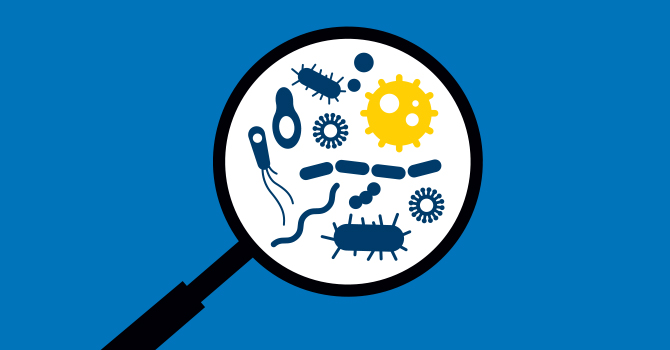
Tracking epidemics—is it really like the movies portray? From legionella outbreaks to predicting this year's flu spread, hear from the real-life disease detectives who track down, predict, and help prevent the spread of disease. Listen as they tell the story of one of the first known disease detectives and guide us through ways in which human expansion and technology have impacted the spread of diseases and disease tracking efforts.
Special thanks to Kristen Nordlund and Thomas Young from Centers for Disease Control and Prevention.
Listen to "Disease Detectives: How to Track an Epidemic" on Spreaker.
|
Subscribe and listen to Population Healthy on Apple Podcasts, Spotify, Google Podcasts, iHeartRadio, YouTube or wherever you listen to podcasts! Be sure to follow us at @umichsph on Twitter, Instagram, and Facebook, so you can share your perspectives on the issues we discussed, learn more from Michigan Public Health experts, and share episodes of the podcast with your friends on social media. |
[music]
00:03 Host: The story of John Snow, the 19th Century English physician and his pioneering endeavor into the mystery of disease spread is one repeated in epidemiology 101 classes each year. It's one of the first known instances in which a scientist tracked down the causes, sources and spread of a disease outbreak. Here's Jon Zelner, Assistant Professor of Epidemiology at the University of Michigan School of Public Health.
00:25 Jon Zelner: The way that we often hear about John Snow is this 1854 Broad Street Pump Outbreak, the story of John Snow walking from house to house cataloging cholera deaths and showing the spatial pattern of cholera mortality that suggested that the Broad Street Pump was to blame for this large outbreak in this area of London called Golden Square. Cholera is caused by the Vibrio cholerae, which is a bacteria that it can often be found in contaminated water sources. Infection with cholera tends to be quite rapid. The period from onset to death can be 24 hours, 36 hours, and that's part of what made it so terrifying was it would strike somebody who seemed healthy and then the next day, they were dead.
01:10 JZ: And in terms of how people thought about cholera at that time, I think it was just terrifying. I think it was something that was kind of around. It would sort of bubble along in the background. It would be endemic pretty much all the time and you would have children dying from it, but then, periodically, you would get these large outbreaks. So it was something that was always with you but then when the outbreaks happened, I think, they were really quite terrifying.
01:33 JZ: The environment was, I would say, by and large, not a particularly pleasant one. It was very crowded, very densely populated. People would die, and they would be buried or not buried right. You would have human remains in places where you wouldn't hope to find them, fecal matter all over the place from leaky cisterns or people who just didn't have access to any kind of sewage. And so, a lot of these places that were high cholera burden places, smelled terrible. So the idea that the bad smells in the air was associated with death and different diseases like Cholera, was not totally strange. It made a lot of sense. It is was not a bad theory, if you really think about it.
02:12 JZ: He was in the thick of it and he was plotting these deaths around the Broad Street Pump and you could very clearly see, yeah, there was this clustering around it, but then sometimes, there would be a household that was really distant, that would have a bunch of cases. And so, he would go and talk to them and it would turn out, well, people liked the Broad Street Pump water actually, because it tasted better. Well, so ironically, we would think, "Oh, it has got cholera and it's gotta be disgusting. But it turned out that it was kind of like fizzy for some reason, it had to do with the local hydrology. And so, it was kind of like a treat. It was like the LaCroix of Victorian London. People would come over and drink from it. And so, you would find these kind of pockets. And when you went to the family, you would say, "Where do you get your water?" They would say, "Broad Street Pump." And this came at the end of a long investigation of the outbreak itself, but also, after years upon years of study and first-hand experience with cholera, both as a practicing physician and also just somebody sort of observing the world around him, so this was something that was on his mind and that he just was kind of in the right spot at the right time when this big one rolled around in 1854. And this was the first time that we know of, that this kind of systematic public health disease detective type information was used to guide a significant intervention.
[music]
03:31 Host: Even with advanced technology and faster communication methods, there's no shortage of outbreak events to chase around the world. At this moment, in early 2020, an outbreak of a mysterious strain of Coronavirus has world health officials on edge. The virus was first noticed in a region south of Beijing where it hospitalized dozens. Since it was first identified, it has been linked to nearly 20 deaths and doctors have confirmed that it has spread beyond China. The World Health Organization, the Centers for Disease Control and Prevention, and networks of health officials around the world are now working to track and contain this public health emergency. But not all disease outbreaks get this level of world attention. Epidemiologists, disease detectives are working to monitor and minimize the spread of dangerous pathogens all the time.
[music]
04:18 Host: Hello and welcome to Population Healthy, a podcast from the University of Michigan School of Public Health. Join us as we dig into important public health topics, stuff that affects the health of all of us at a population level. From the microscopic to the macro-economic, the social to the environmental, from neighborhoods to cities, states to countries, and around the world.
[music]
04:51 Host: From tracking down the culprit, be it a mosquito or contaminated facilities, to preventing a spread before it even starts, and all of the small events that can lead to you getting sick. Today, we're talking to experts in disease detection about how the practice of finding and stopping outbreaks for all manner of diseases has evolved since the days of John Snow.
05:08 Joe Eisenberg: My name is Joe Eisenberg, Professor and Chair of the Department of Epidemiology in the School of Public Health at the University of Michigan. When there's an outbreak, one of the classic things somebody wants to do is figure out what caused that outbreak. If you think it's the food or an outbreak, you wanna see, "Oh, what are the different things that these, the people that got sick, ate," and then maybe look at people that didn't get sick and what did they eat and try and figure out, "Oh, the people that ate the macaroni salad got sick, it was the macaroni salad that caused the outbreak." And then, you might wanna go in and figure out how it was contaminated to see what actually caused that outbreak. We are learning to integrate different disciplines into epidemiology, and think about the social fabric and the social structure of communities and how that affects disease in a more sophisticated way than we did before. How does the environment affect disease and disease transmission and patterns of diseases in the populations? And then, we're trying to see how the environment and the ecology and the social fabric connect in causing disease.
06:00 Host: 20 years ago, Eisenberg and his team began working in northern coastal Ecuador. They wanted to study the impact of a new road. This road was built to connect extremely remote areas to the coast and the Andes. It changed more than travel.
06:00 JE: This road had created lots of different ecologic and social changes that had a lot of implications with respect to disease transmission. We started this study in 2000 to look at how this road impacted, specifically diarrheal diseases in this region where many communities were quite remote from a road. We followed follow these communities over 10 or 15 years, and found that the road had significant impact on the social fabric of these communities. This is an area that prior to 1996, didn't have any roads, didn't have any electricity. And if you wanted to visit these communities, you had to go from this capital city, take a boat in the ocean, come in through a delta, through rivers. It would take literally days to get to some of these communities. And so, the moment that this road opened up and then all of a sudden, this community has got electricity, it was like this festival and felt like Disneyland. They were just partying in the streets and having this great time and everything was very exciting and positive. I think over time, lots of the negative things of having this road started creeping in and the population started talking about increased violence, increased outsiders coming in and changing the social fabric of these communities.
07:47 Host: One of the implications of the road coming into this region was that many of the communities became urbanized.
07:52 JE: What comes along with being urbanized, is that you're more susceptible to diseases that are more connected with urban areas. And dengue and Zika are an example of that. Dengue is a mosquito-borne virus. It is a virus that is transmitted by mosquitoes, so it causes a fever and intense body aches. It's a very uncomfortable and pretty intense disease while you're experiencing the symptoms, but has a very low mortality. Dengue hemorrhagic fever is a much more serious version of dengue and can cause internal bleeding and has a fairly high mortality rate. Zika is also a mosquito-borne virus similar to Dengue. If a woman who's pregnant is infected with Zika, she can transmit the virus to the fetus and the fetus may be born with microcephaly. The reason why dengue has been traditionally thought of as an urban disease is really this idea that people tend to think of urban and rural as dichotomous. You're either urban or you're rural. But in fact, there's a continuum between urban and rural, and what we are witnessing in our area is the urbanization of some of these communities as roads are being built in this area.
09:09 JE: Well, what is it about urban that promotes the transmission of dengue? For instance, the town center of Borbones is starting to get more mechanics because now, there's a road, now there's cars, there's needs for tires. Tires are a great place for water to accumulate and for mosquitoes to breed. The other thing I actually noticed is that the restaurant that we go to all of a sudden now has to-go packages for their lunches, which includes a pretty decent sized cup of soup. And now, when we would walk down the street, there's lots of empty cups of soup that can hold water, that mosquitoes can actually breed in.
09:44 JE: When we started this study, we enrolled 21 villages, we followed those villages over time to look at and collect data on different diseases. We found initially that communities that were close closer to the road were transmitting diseases and pathogens at a higher rate than those communities that were farther from the road. Prior to that, a lot of people would say, "Well, if you're more remote, you have less access to healthcare, and therefore, you are gonna be worse off than if you are more connected to the road," and we found actually the opposite.
[music]
10:25 Host: The epidemiologist toolkit is large and varied. Biology, chemistry, social sciences, geography, genetics; they're just a few of the tools that come into play. Mathematical modeling is one such tool that can help epidemiologists understand the complicated systems behind how diseases are transmitted and can sometimes even help make predictions about outbreaks.
10:45 Marisa Eisenberg: My name is Marisa Eisenberg and I'm an Associate Professor in epidemiology at the University of Michigan School of Public Health, and I'm also jointly appointed in Complex Systems and Mathematics here at UM. There's a ton of different ways that people can be successful as epidemiologists. Some people come at it from a more medical perspective, some people like me come at it from a more mathematical or quantitative background. And I think part of what makes epidemiology as a field, and epidemiologists in particular, kind of fantastic is that they do come from all these different disciplines, and then you kind of meld those different disciplines to answer questions about health at a big scale. A model is really any kind of abstraction of the system that you're thinking about that helps you reason about it. When you use a map, you're using a model, you're looking at a sort of representation of the world around you that let's you reason about, "Okay, what's the best way for me to get from point A to point B?" What's gonna be important to include in your map or in your model is gonna depend on what question you're trying to answer.
11:48 ME: If we're thinking about, for instance, let's say 20 kids that are going on a school camping trip or something, and one of them has the flu and we wanna know how many other kids are they going to transmit the flu to over the course of this camping trip. Okay, maybe we wanna think about how many kids there are, what kinds of activities are they going to do, are those activities gonna put them in close contact with each other or make it possible for them to transmit the flu to one another? Are they gonna be sleeping in little tents together, or are they sleeping all separately? All of those different kinds of questions about what is gonna be happening and what would opportunities for transmission be? We might also think about maybe more biological questions. How many of those kids have had their flu shots? Those would also be important questions to understanding how many kids you might expect to get the flu over the course of this camping trip.
12:28 Host: These models are helpful to try and understand the mechanics behind disease spread in the real world. They can also be used to forecast how a future outbreak might unfold.
12:28 ME: One example that comes to mind, we were working with a number of folks at a refugee camp on the Thai-Myanmar Burma border. It's a long-standing refugee camp. It was established in 1984, it has around 50,000 refugees, mostly Karen, but also now, increasingly, Rohingya. In this camp, the US CDC, the Thai Ministry of Public Health and several different NGOs work together to provide medical and public health infrastructure and also clean water and things like this, but resources are limited, and the sort of clean water situation isn't perfect. And so, a lot of times, people in the camp use a number of springs and a river, and a number of different other kinds of sources of water, and as a result, there had been cholera epidemics every one to two years in this camp. And they wanted to run a vaccine campaign.
13:33 ME: When you're running a campaign like this, you might wanna make sure that the vaccination strategy that you're using is actually going to be sufficient to ensure that you stop a cholera epidemic from happening. We built a mathematical model using data collected from both previous epidemics there, and also demographic data about births and deaths and incoming migrations and all of these different kinds of information about what was going on in the camp at the time. Because it's a refugee camp setting, it can be difficult to track exactly who's where. And for the cholera vaccine, you need to give two doses that are spaced apart by a certain amount of time.
14:07 ME: And so, if a healthcare worker gives a dose to somebody, it's not always easy to make sure you find that exact person again and go back and give them the second dose. One of the questions that the folks that we were working with had was, if you did a first come first served kind of approach where you do two waves and maybe not everybody actually gets both doses, will that be okay and build up enough immunity in the population to ensure that we don't have a cholera epidemic? We were able to sort of build this model, fit to the data that we had available to us, and then make some predictions about what are the chances that you might have a cholera epidemic still even though you ran this vaccine campaign. What would they be if you hadn't run the campaign at all? All of our simulations were very much in favor that running this campaign was gonna be a huge benefit. And moreover, it stood a really good chance of preventing a cholera epidemic from being able to take off. They ran the campaign, it was a success, there was not a cholera epidemic the subsequent summer, which is obviously great.
[music]
15:11 Host: While we rarely see the creation of mathematical models in the Hollywood portrayals of disease trackers, we often see action-packed globe-trotting super scientists. But what does a real case really look like for today's epidemiologists?
15:25 Olivia McGovern: My name is Olivia McGovern, I'm an alumni of the hospital in molecular epidemiology program in the School of Public Health at the University of Michigan. And for the past year and a half, I've been working at the CDC as an Epidemic Intelligence Service Officer or an EIS Officer. CDC stands for the Centers for Disease Control and Prevention. It's a public health agency that contains experts on many different subject matter areas. This last year, I was deployed to assist with an outbreak of Legionnaires' Disease in New Jersey. Legionnaires' Disease is a severe pneumonia that's caused by the Legionella bacteria. The New Jersey Department of Health led the investigation but requested assistance from CDC, and that's where I became involved. I think we all would like it if when a disease outbreak was happening, that we would know about it right away. But in reality, there's a lag between when an outbreak might happen and when we detect it, and when we're able to investigate it.
16:32 OM: When you're looking at whether or not to perform an investigation, what you wanna know is: Is there an outbreak? And the way you determine that is: Is there a number of cases of Legionnaires' Disease that is higher than what you would normally expect? In reality, there's a several week lag between when the exposures happen to when we can actually detect that there might be a problem. And then of course, once we determine that there is an active outbreak going on, we wanna respond as quickly as possible. In this case, when the New Jersey Department of Health called, we were out the door within, I believe, like a day and a half. Things can happen pretty quickly once we know there's a problem. Where the lag really comes in is how quickly enough cases are reported that we can detect that there's an actual problem. Legionella bacteria has an incubation period of 14 days, and what that means is that once you're exposed to the bacteria, it can typically take up to 14 days before you actually feel ill. And once you start feeling sick, you may think it's just a cold and wait it out a little bit until you're not feeling so well, and then you'll finally go to the doctor. So it could be two or three weeks after you're exposed when you go to the doctor.
17:50 OM: When we first started out, we would interview patients on the phone using a standardized questionnaire and we would ask them some questions about what they were doing and places they went in the 14 days before they became sick. Then we compile that information together and it tells us where the patients might have visited that's in common. In this case, the reason that they believe that a cooling tower would be the most likely source of disease has to do with the geographic spread of the patients in terms of where they lived and the places that they visited. If the source of the Legionnaires' Disease was, let's say, a fountain which is located in a very specific area, then when you perform initial interviews with the patients, what you expect to see is that many of the patients will be visiting the same exact location, say like a restaurant that has the a fountain outside. And over and over again, you'll hear that the patients visited this restaurant or walked nearby at this restaurant. Versus a cooling tower, you're gonna see that people are visiting the same general area, but not necessarily going to the same specific place. And so, the common area will be much larger and that's because of a fountain will maybe spread the bacteria over several feet, but a cooling tower can actually spread bacteria in the air for up to a one to two mile radius.
19:16 OM: And so we identified some of those areas and we walked around on foot, visually looking for cooling towers. Then we went out in teams on the ground to do visual inspection and environmental sampling of these cooling towers. Environmental samples were sent back to the CDC lab and were tested to see if any of them contained the viable Legionella bacteria. If we find Legionella bacteria in the cooling towers, we can compare that to the Legionella bacteria that we get from patients. And if they're a very close match, then that can give us a good idea of whether or not we think that a particular cooling tower could be the source of the disease outbreak.
[music]
19:18 OM: There's a number of things that I like about the work that I get to do. One is that it's very exciting to deploy and be on the ground and to do these investigations. And I really would characterize what we do as being disease detectives, and I think that's what's really fun about it is you respond to whatever shows up at your door that day. You don't really know what's going on, and so you go on the ground and you sleuth around and you follow the clues that eventually lead you to what you think might have been the cause of that outbreak. Everything you do is towards improving the public's health and helping protect the public's health before they become sick. When you go out on these investigations, it really is a service to that community, and that's something that's really rewarding.
[music]
21:00 Host: Thanks for listening to this episode of Population Healthy from the University of Michigan School of Public Health. We're glad you decided to join us and we hope you learned something that will help improve your own health or make the world a healthier place. If you enjoyed the show, please subscribe or follow this podcast on iTunes, Apple Podcasts, Google Play, Stitcher, Spotify, or wherever you listen to podcasts. Be sure to follow us at UMICH SPH on Twitter, Instagram and Facebook, so you can share your perspectives on the issues we discuss, learn more from Michigan public health experts and share episodes of the podcast with your friends on social media. You can also check out the show notes on our website, publichealth.umich.edu/podcast for more resources about the topics discussed in today's episode. If you want to stay up to date with the latest research and expertise from Michigan Public Health, subscribe to our Population Healthy Newsletter at publichealth.umich.edu/news/newsletter. We hope you join us for next week's episode where we'll dig further into public health topics that affect all of us at a population level.
[music]
In This Episode
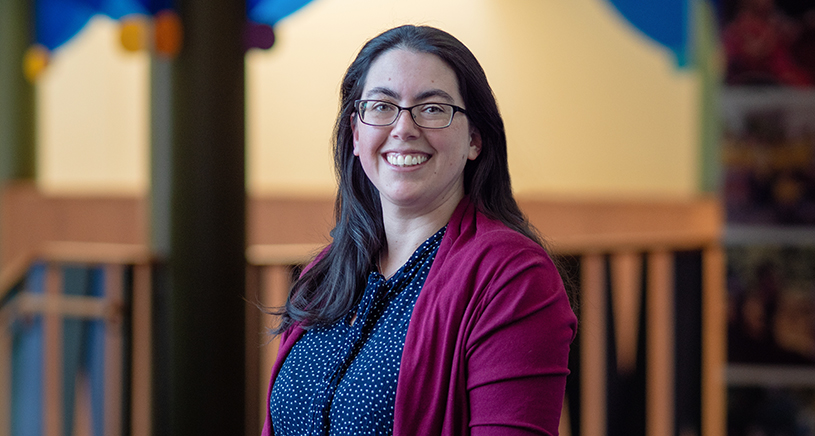 Marisa Eisenberg
Marisa Eisenberg
Associate Professor of Epidemiology at the University of Michigan School of Public
Health
Marisa Eisenberg's research is in mathematical biology, and is centered around using
and developing parameter estimation and identifiability techniques to connect math
models and disease data. Her recent research has been primarily in modeling infectious
diseases, particularly examining cholera and waterborne disease. Learn more.
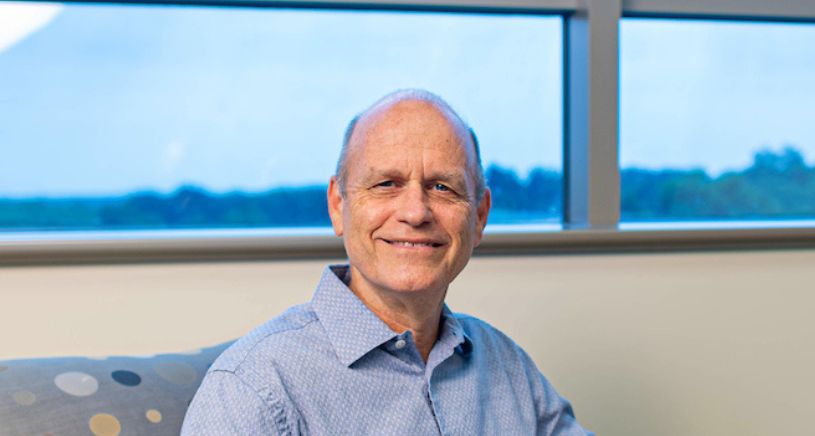 Joseph Eisenberg
Joseph Eisenberg
Professor of Epidemiology at the University of Michigan School of Public Health
Joe Eisenberg studies infectious disease epidemiology with a focus on waterborne and
vectorborne diseases. His broad research interests, global and domestic, integrate
theoretical work in developing disease transmission models and empirical work in designing
and conducting epidemiology studies. He is especially interested in the environmental
determinants of infectious diseases. Learn more.
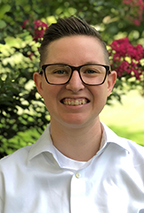 Olivia McGovern
Olivia McGovern
Epidemic Intelligence Service Officer, Centers for Disease Control and Prevention
and Lieutenant in the United States Public Health Service
Olivia McGovern’s work focuses on research, response, and capacity building to combat
bacterial respiratory diseases. She recently travelled to Mozambique where she supported
their Ministry of Health to conduct a workshop on improving meningitis surveillance
in the country. Currently, she is collaborating with her colleagues in the lab to
understand best practices for detecting C. psittaci infection, a condition known as
psittacosis. This work will improve patient diagnosis, clinical management, and psittacosis
outbreak detection and response. Learn more.
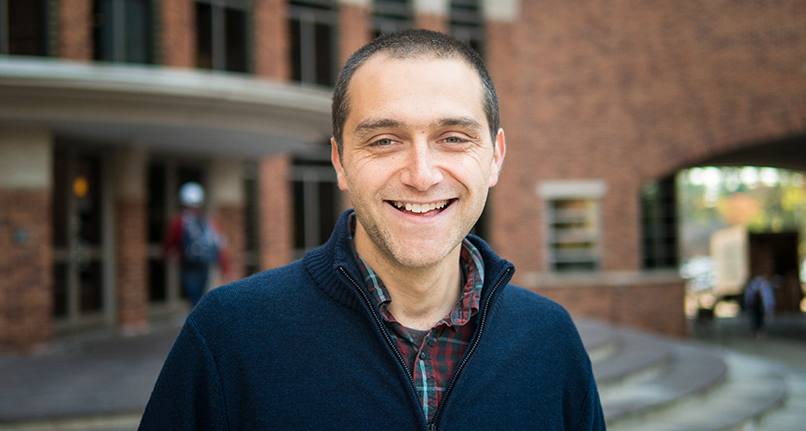 Jon Zelner
Jon Zelner
Assistant Professor of Epidemiology at the University of Michigan School of Public
Health
Jon Zelner is a social epidemiologist focused on understanding and targeting the joint
social and biological drivers of infectious disease risk. His work blends theory and
methods from sociology and epidemiology, with an emphasis on the development and use
of novel computational and statistical methods for integrating social and biological
data. Learn more.
